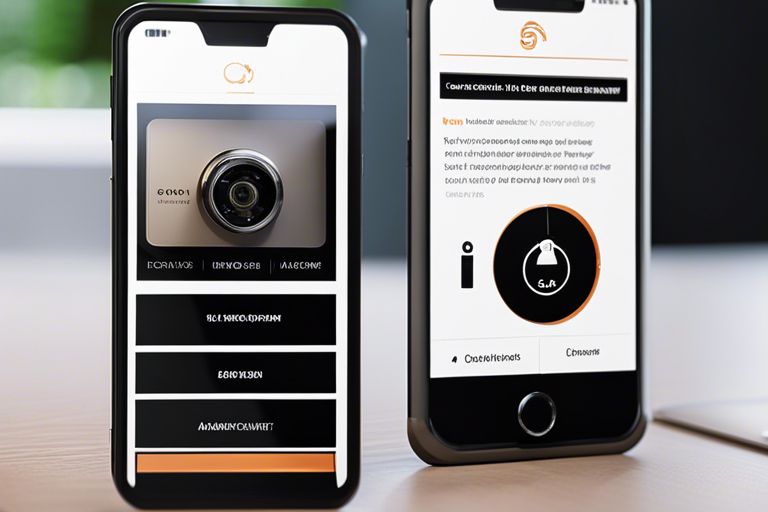Ensuring the security of applications has become more critical than ever, with the increasing number of cyber threats in the digital landscape. Application security testing is a fundamental process that helps identify vulnerabilities and weaknesses in software, which if left unchecked, could lead to data breaches, financial loss, and reputational damage for organisations. By conducting regular security testing, businesses can proactively identify and address potential security risks, ultimately enhancing their overall security posture and safeguarding sensitive information. This blog post explores into the significance of application security testing and highlights why organisations must make it a priority to protect their applications from a myriad of cyber threats.
Key Takeaways:
- Regular application security testing is important to protect against cyber threats and vulnerabilities.
- Automated tools can help streamline the application security testing process and identify issues more effectively.
- Manual testing is also crucial as it can uncover complex vulnerabilities that automated tools may miss.
- Implementing a combination of automated and manual testing approaches can provide a comprehensive view of the application’s security posture.
- Continuous monitoring and testing are necessary to maintain the security of applications in the ever-evolving threat landscape.
The Pillars of Application Security Testing
Static Application Security Testing (SAST)
Static Application Security Testing (SAST) is a crucial pillar of application security testing that involves analysing the source code of an application to identify vulnerabilities. By scanning the code before it is compiled, SAST provides early detection of potential security flaws and helps developers address issues at the root level. It is an vital tool in ensuring that applications are robust and secure against threats.
Dynamic Application Security Testing (DAST)
Dynamic Application Security Testing (DAST) is another key pillar of application security testing that involves assessing a running application for vulnerabilities. Unlike SAST, DAST works from the outside in, mimicking real-world attacks to identify weaknesses that could be exploited by malicious actors. By conducting dynamic testing, organisations can simulate hacker activities and proactively strengthen their defences.
Dynamic Application Security Testing (DAST) plays a vital role in evaluating an application’s security posture in real-world conditions. By interacting with the application like a potential attacker would, DAST uncovers vulnerabilities that may not be apparent in static code analysis. This form of testing provides a more comprehensive view of an application’s security resilience and helps organisations identify and remediate security risks effectively.
Best Practices in Security Testing
Integrating Security Testing in the Software Development Lifecycle
Integrating security testing in the software development lifecycle is crucial to ensure that security checks are performed at every stage of the development process. By integrating security testing early on, potential vulnerabilities can be identified and resolved before they become major issues in the final product. This proactive approach helps in building more secure software and reducing the risk of security breaches.
Automating Security Testing
Automating security testing is a recommended best practice to streamline the process and improve efficiency. By automating security tests, developers can quickly identify vulnerabilities, run tests frequently, and detect issues in real-time. This approach not only saves time and resources but also helps in maintaining a high level of security throughout the development cycle.
Automating security testing involves using tools and scripts to perform security tests automatically, without the need for manual intervention. This allows for continuous testing and immediate feedback on any security weaknesses that need to be addressed. Additionally, automating security testing can help in standardising the testing process and ensuring that all necessary security checks are consistently conducted.
Challenges and Solutions in Application Security Testing
Dealing with False Positives and Negatives
One of the key challenges in application security testing is the presence of false positives and false negatives. False positives occur when a security tool incorrectly identifies a non-existent vulnerability, leading to wasted time and resources in investigating and remediating issues that are not actual threats. On the other hand, false negatives are even more concerning as they involve missed vulnerabilities that could be exploited by attackers. To address these challenges, it is crucial to fine-tune security tools, develop customised rule sets, and conduct manual verification to reduce the occurrence of false results.
Scaling Security Testing for Enterprise Applications
Scaling security testing for enterprise applications presents its own set of challenges, including the sheer volume of code to be tested, diverse technology stacks, and multiple development teams working concurrently. To tackle this, organisations can implement automation in testing processes, integrate security testing into the DevOps pipeline, leverage cloud-based security tools for scalability, and ensure consistent security testing across all stages of application development and deployment.
The Business Impact of Security Testing
Compliance and Regulatory Requirements
Compliance and regulatory requirements are important aspects of any business operation, especially in industries handling sensitive data. Security testing ensures that applications meet these requirements and avoid potential legal repercussions. By conducting regular security testing, businesses can adhere to standards such as GDPR, PCI DSS, and HIPAA, thus safeguarding their operations and reputation.
Protecting Brand Reputation and Customer Trust
Protecting brand reputation and customer trust is paramount in today’s digital landscape where data breaches and cyber attacks dominate headlines. Security testing plays a crucial role in safeguarding customer data and preventing damaging security incidents that could tarnish a company’s image. By investing in robust security testing measures, businesses demonstrate their commitment to protecting their customers’ sensitive information.
The Importance of Application Security Testing
Application security testing is crucial in safeguarding sensitive data, protecting user privacy, and maintaining the integrity of digital systems. By proactively identifying and fixing vulnerabilities, organisations can prevent costly data breaches, reputational damage, and legal ramifications. Regular security testing helps ensure that applications meet industry standards and compliance requirements, instilling trust in customers and stakeholders. Investing in thorough security testing not only enhances the overall security posture of an organisation but also demonstrates a commitment to prioritising data protection. In an increasingly digital world where cyber threats are constantly evolving, application security testing is a non-negotiable aspect of risk management that should be integrated into every software development lifecycle.
FAQ
Q: Why is application security testing important?
A: Application security testing is imperative to identify and fix vulnerabilities in software applications before they are exploited by attackers, ensuring the protection of sensitive data and maintaining the trust of users.
Q: What are the common types of application security testing?
A: Common types of application security testing include static application security testing (SAST), dynamic application security testing (DAST), interactive application security testing (IAST), and runtime application self-protection (RASP).
Q: How often should application security testing be conducted?
A: Application security testing should be conducted regularly throughout the software development life cycle, including during initial development, testing, and production phases, to proactively detect and address security flaws.
Q: What are the benefits of integrating security testing into the development process?
A: Integrating security testing into the development process helps identify and resolve security issues early, reduces the potential costs of fixing vulnerabilities later in the development cycle, and improves overall software quality and security posture.
Q: How does application security testing help in achieving compliance requirements?
A: Application security testing assists organisations in meeting regulatory compliance requirements by ensuring that security standards are met, vulnerabilities are identified and addressed, and sensitive data is adequately protected against potential threats and breaches.






